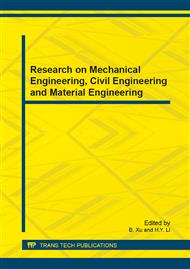p.110
p.114
p.118
p.125
p.129
p.133
p.140
p.145
p.149
Elasto-Plastic Analysis of Soil around Tubular Pile Based on Triple Shear Unified Yield Criterion
Abstract:
The elasto-plastic analysis using the triple shear unified yield criterion and the cavity expansion theory is devoted to soil around the tubular pile. When the influence of the intermediate principal stress is considered, the driving effect of the tubular pile is studied. The relationship between plastic zone, the limit expansion pressure, the radial stresses and the parameter b is also obtained. The results show that the radius of plastic zone is decreased and the limit expansion pressure is increased, at the same radius, the radial stress is also increased, because of the effect of intermediate principal stress.
Info:
Periodical:
Pages:
129-132
Citation:
Online since:
October 2013
Authors:
Price:
Сopyright:
© 2014 Trans Tech Publications Ltd. All Rights Reserved
Share:
Citation:


